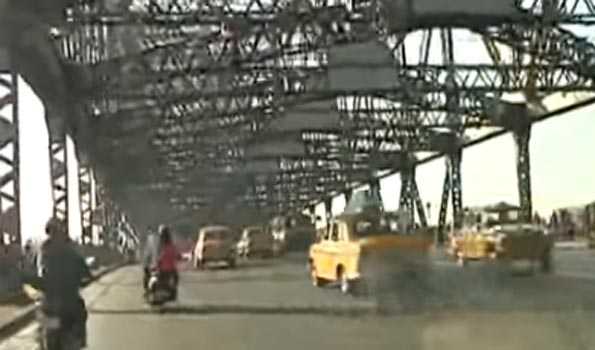With growing vehicle numbers and resultant congestion and dieselisation, Kolkata is in the grip of rising air pollution and multi-pollutant crisis.
Kolkata has often surpassed Delhi as being the most polluted city in the world during this winter. The AQI is an index for reporting daily air quality. It tells how clean or polluted the air is and focuses on health effects one may experience within a few hours or days after breathing polluted air, according to Dr Raja Dhar, director of the department of Pulmonology, Fortis Hospital Anandapur.
Environmental Protection Agency (EPA) calculates the AQI for five major air pollutants regulated by the Clean Air Act: Ground-level ozone, particle pollution (also known as particulate matter), carbon monoxide, sulfur dioxide, and nitrogen dioxide.
Every year pollution levels in Kolkata rise rapidly in winters due to low wind speed, low temperature, and inversion trap pollution. In winters, particulate levels can be as high as four times the standards.
About 99 per cent of commercial vehicles in Kolkata are diesel driven. This is a very serious concern as the World Health Organisation (WHO) had classified diesel emissions as class 1 carcinogen for its strong link with lung cancer – putting it in the same class as tobacco smoking.
According to the Comprehensive Mobility Plan, around 70 per cent of Kolkata’s 18 million inhabitants suffer from respiratory problems such as asthma and lung cancer, which are caused by pollution from the city’s chaotic transport sector.
Studies carried out by Chittaranjan National Cancer Research Institute have found that more than 60 per cent children in Kolkata were diagnosed with lung function impairments as compared to 24 per cent in cleaner areas.
Healthy individuals and non-smokers have also shown respiratory symptoms and lung function impairment. The idea that outdoor air pollution can cause exacerbations of pre-existing asthma is supported by an evidence base that has been accumulating for several decades, with several studies suggesting a contribution to new-onset asthma as well.
There is good quality evidence that particulate matter (PM), gaseous pollutants (ozone, nitrogen dioxide, and sulphur dioxide), and mixed traffic-related air pollution definitely lead to acute attacks of asthma but also cause new onset of asthma. However the evidence for new onset asthma is variable.
The admissions with acute severe asthma trebled in my practice this year between November and February (compared to summer) due to the above mentioned factors. Just under two thirds of people with asthma say that poor air quality makes their asthma worse, which puts them at higher risk of an asthma attack.
It’s not surprising that air pollution is worse in cities, and around busy roads, particularly when traffic is moving slowly. But it’s also bad close to airports, seaports and industrial sites. Try to avoid pollution hot spots like junctions, bus stations and car parks on high pollution days. And if you’ve got a city break booked, check out the pollution levels there before you go, Dr Dhar stated.
It’s also a good idea to know when air pollution levels are likely to be worse. For example: Afternoons and evenings – pollution is usually higher later in the day because it’s had a chance to build up. Rush hour – when there are larger numbers of vehicles on the road. Still, sunny days can sometimes leave a toxic smog. When it’s humid – hot, still air means pollutants are allowed to build up. Still, cold days trap pollution close to the ground causing winter smog, he said.
Dr Dhar said some people with asthma choose to wear a face mask when they go out to limit the amount of pollution they’re breathing in. If you do decide to try a mask, make sure it has a good seal around your face, a fine filter and that you change the filter often. “There’s not enough evidence to say that wearing a face mask to avoid pollution will make a difference to your asthma symptoms. A face mask can make breathing feel more of an effort. Stop using it if it makes it harder to breathe and always make sure you continue to take your prescribed asthma medicines,” he said.
Dr Dhar further said: “If you’re taking your steroid inhaler every day you’ll cope better with all your triggers, including pollution. Always carry your reliever inhaler with you to quickly deal with any symptoms. Limit time spent outside or go out earlier when air quality tends to be better. Travel outside of the rush hour if you can. Avoid physical activities and exercise close to main roads on days when pollution levels are high. Keep your car windows closed, especially if you’re stuck in traffic.” (UNI)




